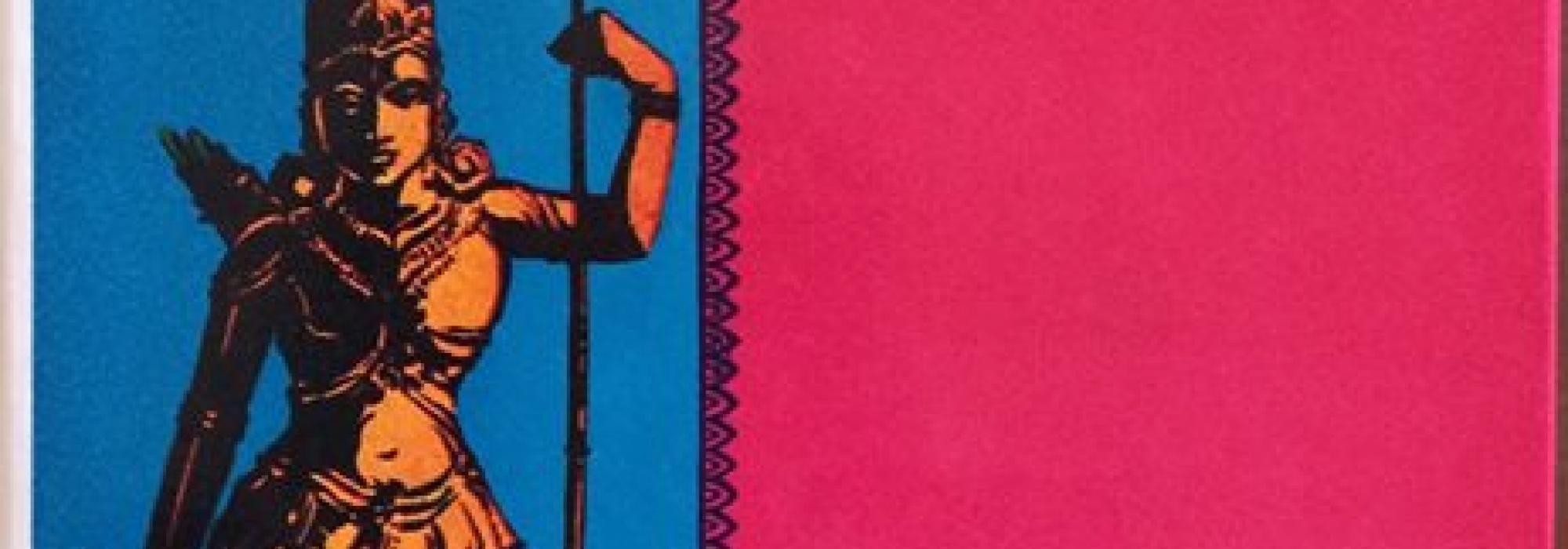Daily Routine
V.S. Srinivasa Sastri's daily routine in Bangalore was as follows: He got up before 7 in the morning and visited Lal Bagh. He would sit on the shore of the lake or on a bench in the garden. If he had an article in mind, he would dictate it and it was my duty to write it down. This would usually go on for about half an hour or forty five minutes. There were deer housed in front of the place where we usually sat down. He was very eager to see the deer ruminating grass and walking around in the enclosure. He would recite the poem – ‘romanthamākurvati’ from the Śākuntalam (of Kālidāsa) as he watched the deer. He walked around slowly. It was also my duty to stop him from walking very fast and to slow his gait down. At times, when he had lost himself in talking to me, he unconciously accelerated his gait. If he met someone on the way who he could converse with, his speed of walking would go even further up. I had been told that I was to stop him from doing so.
As we took strolls in Lal Bagh different topics would come up for discussion. We often went by the mādhavī creeper present in the garden. He would see that and quote - “Kṣāmakṣāmakapolam…” from Śākuntalam. He would explain how to split the words, parse them and the summary of the poem. He spoke at length about the meaning of the verse. His manner of speaking itself was a huge treat for our ears and hearts. As he explained the meaning, he often quoted phrases and sentences from Sanskrit literature. At times, it turned into a monologue completely in Sanskrit and went on for a few minutes.
One day, we spotted an Ashoka tree. He started praising the tree saying that it sheltered Sītā (when she was abducted by Rāvaṇa. The Rāmāyaṇa tells us that Rāvaṇa housed her in ‘Aśoka-vana’ in Lanka)
रक्तस्त्वं नवपल्लवैरहमपि श्लाघ्यैः प्रियाया गुणै
स्त्वामायान्ति शिलीमुखाः स्मरधनुर्मुक्तास्तथा मामपि ।
कान्तापादतलाहतिस्तव मुदे तद्वन्ममाप्यावयोः
सर्वं तुल्यमशोक केवलमहं धात्रा सशोकः कृतः ॥
raktastvaṃ navapallavairahamapi ślāghyaiḥ priyāyā guṇai
stvāmāyānti śilīmukhāḥ smaradhanurmuktāstathā māmapi ।
kāntāpādatalāhatistava mude tadvanmamāpyāvayoḥ
sarvaṃ tulyamaśoka kevalamahaṃ dhātrā saśokaḥ kṛtaḥ ॥
This verse puns on several words and brings together the description of an ashoka tree and the state of a lover who is craving for the company of his beloved
“O Aśoka! You are in the rakta (red, love) varṇa (colour) because of new sprouts. I am in love with the exemplary qualities of my beloved. Śilīmukhāḥ (bees, arrows) approach you, as you have blossomed. I am the target of all Manmatha’s arrows (which are supposed to kindle love, passion). You are thrilled if a lady kicks you and so am I. You and I are similar in every aspect, but Brahma has made you aśoka (devoid of sorrow) but I am saśoka (full of sorrow)”
The poet puns on the words rakta, śilīmukha, pādāghāta and aśoka. He has also employed an ancient poetic convention that is derived from the vṛkṣa-dohada-śāstra, i.e., the science of tree-desires (what makes a tree blossom). According to the śāstra for certain kind of trees to blossom, young and beautiful women should serve it in a certain ways. It is said that a lady should gently kick the Ashoka tree to make it blossom.
(Some say that ‘Nameru’ is the surahonne tree and some others say that it is the rudrākṣa tree)
Sastri explained such kavi-samayas (poetic conventions) to us.
We had many such lively conversations during our morning walks and returned home by nine in the morning. By then, the day’s newspaper would have arrived. Sastri would go through the headlines that he felt were imporant and described their content to me. Discussions usually followed during and after his reading of the newspaper. This went on until eleven. He then would have his meal and retire for a siesta.
I would go back to his place by three in the afternoon. By then, his wife Lakshmamma would also have got some free time. We all sat together and had some lively discussions.
By half past four or by five in the evening, Sastri’s other friends visited him. On some days we headed out for a casual stroll to breathe in fresh air. In the beginning we rented a coach and travelled in it to inhale fresh air. Later on, one of our friends brought a car to take us around.
Dedication to Mahākāvya-s
During the early days of his stay in Bangalore, Sastri was very weak. How should he spend his time? I told him that I would bring a couple of books for him to read. Back then, I was going through the works of the Greek dramatist Sophocles. I was enthusiastic about the work – and I should admit that my enthusiasm was quite high. Being overly enthusiastic about somethings is one of my shortcomings. Sastri’s reply was so impactful that I should note down for eternity –
“Why do I need to read anything new? My old Rāmāyaṇa and works of Shakespeare suffice!”
Shankaranarayana Sastri
Shankaranarayana Sastri, Srinivasa Sastri's father was a famous paurāṇika (bard, story teller, raconteur). He delivered story telling sessions on the Rāmāyaṇa in public. This is how Srinivasa Shastri developed great reverence and love for Rāmāyaṇa– it was something that had come down to him in his family. He developed great scholarship in the work too. Sastri’s ancestors, namely his grandfather, great-grand father and great-great-grandfather were scholars of Veda and Vedānta. They had taken to yatyāśrama (sanyāsa) in their old age and had attained siddhi (Ultimate goal, liberation).
Sastri was born in a village called Valangiman which is located at a distance of about five miles from Kumbhakonam. The graves of his ancestors are present to this day near the village. I knew that Sastri sent some money every year for the renovation of the place and to organise pūjā for the ārādhana (yearly rituals connected with the passing away of sanyāsi-s) of his ancestors.
The Study of Rāmāyaṇa
Sastri usually read out sections from the Vālmīki Rāmāyaṇa. His wife, Lakshmamma then would compare what Vālmīki had said with the same sections from the Tamil poet Kamban’s Rāmāyaṇa. She was more familiar with Tamil literature. A conversation regarding the beauty in both poems would ensue. Their study of the Rāmāyaṇa proceeded in a relaxed manner.
Dr. C.B Ramaraya gave a copy of Shakespeare’s works to Srinivasa Sastri. The book was in the form of folios and ran to three volumes. The books were published in large print. Sastri appreciated the characters created by Shakespeare and explained the beauty in the conversations when he found some free time. He also elucidated upon some catchy phrases found in Shakespearean plays and helped us understand their aesthetic appeal.
Some evenings, he would hop onto to his vehicle and go around the city, visiting places he thought were worth seeing. One such place was the Sugrīva temple located in Balepete. This was a unique thing for Sastri and had greatly kindled his interest. He was a close friend of Śrī Rāma and helped him in his dhārmic activities. “Ah! Bangalore has people who remember Sugrīva!” He had told me about a certain unique feature of the Sugrīva idol and I am unable to recollect it today.
Sastri was the eldest among his siblings. Vasudeva Sastri, Narasimha Sastri and Ramaswami Sastri were his younger brothers. Vasudeva Sastri was an inspector of the schools located in the Bellary region. He was well educated. Narasimha Shstri worked at co-oprative societies. Ramaswami Sastri was one of the Associate Editors of the ‘Hindu’ daily.
An incident comes to my mind in this connect. One day, Sastri asked me
Sastri: What does your younger brother do?
Me: He goes to college in Mysore
Sastri: What has he chosen for his optionals?
Me: Politics and Economics
Sastri: Why did you make him choose these subjects?
Me: I didn’t choose them for him, sir. He chose them by himself. He might have thought that knowledge in those areas would help him get a job as a journalist like me.
Sastri: One journalist per house suffices! Let one person hold a job that will earn the family its livelihood. Let me tell you my experience with my family. I took up the job of a school teacher. My younger brother Vasudeva too was appointed as a school teacher. I wanted to take good care of my parents in their old age. My brother Ramaswami wanted to be a lawyer. I approached Vakil Ramaswami Iyer on his behalf and requested him – ‘Please reserve a place for this boy in your office.’ He kindly consented to my request. Now, this boy, after having passed his B.L turned adamant about joining a newspaper office as a journalist! My plans thus got shattered. Service to the nation is a noble job – who would say that you must not do it? But, the family needs some food and clothing!”
Sastri was not depressed or worried about his poverty. I have hardly seen his thoughts wander in that direction! There are some trying situations in his family even today! I have seen him lost in deep thought and being anxious during such situations.
To be continued...
This is the third part of the English translation of Second essay in D V Gundappa’s magnum-opus Jnapakachitrashaale (Volume 6) – Halavaru Saarvajanikaru.







































